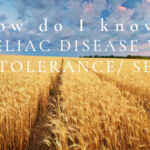GETTING YOUR POOP TOGETHER
It’s time to get real. When was the last time

DIVERTICULOSIS OR DIVERTICULITIS? The terms diverticulosis and diverticulitis sound similar, but what’s the difference? And is one more serious than the other? These are common questions I get when discussing the topic of diverticulosis and diverticulitis, so, let’s discuss. They are different, but related. The short version: Diverticulosis is an out-pouching of the wall of the intestine, and diverticulitis refers to the process of one or more of these pouches becoming infected and inflamed. So, what exactly is diverticulosis (the longer version)? Diverticulosis
IS IT OK TO GOOGLE MY SYMPTOMS? Chances are, if you’ve been handed off from doctor to doctor, without finding a resolution for your gastroenterological issues, you may be at the end of your patience with standard medical practices. After all, you are an individual person with individual symptoms – not just someone who can be placed in a box and given a one-size-fits-all solution. Have you Googled your symptoms looking for answers? Trust me, you are not alone! Everyone does it. As
FIVE THINGS TO KNOW ABOUT IBD Inflammatory bowel disease (IBD) is a chronic condition that affects the gastrointestinal (GI) tract. Here are five important things you should know about IBD: IBD affects millions of people worldwide: IBD is a global health issue, with an estimated 3 million people affected in the United States alone. The condition is found in people of all ages, although it is most commonly diagnosed in young adults between the ages of 15 and 35. (SOURCE) There are two

9057 Greenwood Ave N Ste C205 Seattle, Washington 98103
206-643-2239
206-299-4361
staff@pnwintegrativemed.com

It’s time to get real. When was the last time

Have you noticed a burning sensation in your esophagus or

As a naturopathic doctor with a specialty in gastroenterology I

UNDERSTANDING THE DIFFERENCE BETWEEN CELIAC DISEASE & WHEAT INTOLERANCE /

For those who have chronic bowel discomfort and have not
Tuesday 10:00 AM - 5:00 PM
Wednesday 10:00 AM - 5:00 PM
Thursday 10:00 AM - 5:00 PM
Monday 8:00 AM - 4:00 PM
Tuesday 8:00 AM - 4:00 PM
Wednesday 8:00 AM - 4:00 PM
Thursday 8:00 AM - 4:00 PM
Friday 8:00 AM - 4:00 PM
Designed by AMOR © 2024 All Rights Reserved